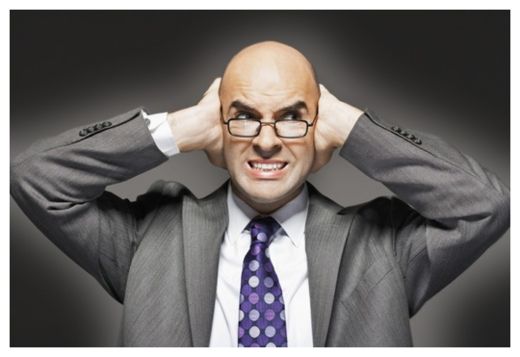
© bikeriderlondon / Shutterstock
There are noises that set our teeth on edge, make us recoil, and generally unnerve us. For me, that noise is the sound of someone popping his or her back. Scientists from
Newcastle University and the
Wellcome Trust Centre for Neuroimaging say heightened activity between the emotional and auditory areas of the brain can explain why the sound of chalk on a blackboard, a knife on a bottle, or a joint popping is so unpleasant.
A new study, published in the
Journal of Neuroscience, reveals the interaction between the region of the brain that processes sound - the
auditory cortex - and the region which processes negative emotions - the
amygdala.
The team used brain imaging to show that when we hear an unpleasant noise the amygdala modulates the response of the auditory complex. This heightens activity and provokes our negative reaction.
"It appears there is something very primitive kicking in," says Dr
Sukhbinder Kumar, from Newcastle University. "It's a possible distress signal from the amygdala to the auditory cortex."
The team examined the brains of 13 volunteers using functional magnetic resonance imaging (
fMRI) to see how their brains reacted to unpleasant noises. The test subjects listened to a range of noises while inside the scanners and rated them from most unpleasant - the sound of a knife on a bottle - to most pleasant - bubbling water, giving the research team the ability to study the brain response to each type of sound.
What they found was the activity of the amygdala and the auditory cortex varied in direct relation to the perceived unpleasantness reported by the test subjects. The amygdala, the emotional center of the brain, takes control and modulates the activity of the auditory cortex to heighten our perception of unpleasant sounds over pleasing ones.
Analyzing the acoustic features of the sounds allowed the team to find anything in the frequency range of 2,000 to 5,000 Hz is considered unpleasant.
Dr Kumar explains, "This is the frequency range where our ears are most sensitive. Although there's still much debate as to why our ears are most sensitive in this range, it does include sounds of screams which we find intrinsically unpleasant."
Research such as this could further our understanding of medical conditions where people have a decreased sound tolerance such as hyperacusis, misophonia (hatred of sound), and autism.
Professor Tim Griffiths from Newcastle University says, "This work sheds new light on the interaction of the amygdala and the auditory cortex. This might be a new inroad into emotional disorders and disorders like tinnitus and migraine in which there seems to be heightened perception of the unpleasant aspects of sounds."
Out of the 74 sounds the test subjects listened to and rated, the top ten most unpleasant noises were:
1.
Knife on a bottle
2.
Fork on a glass
3.
Chalk on a blackboard
4.
Ruler on a bottle
5.
Nails on a blackboard
6. Female scream
7. Anglegrinder
8. Brakes on a cycle squealing
9. Baby crying
10. Electric drill

Drill's on list B/C dentists
R.C..